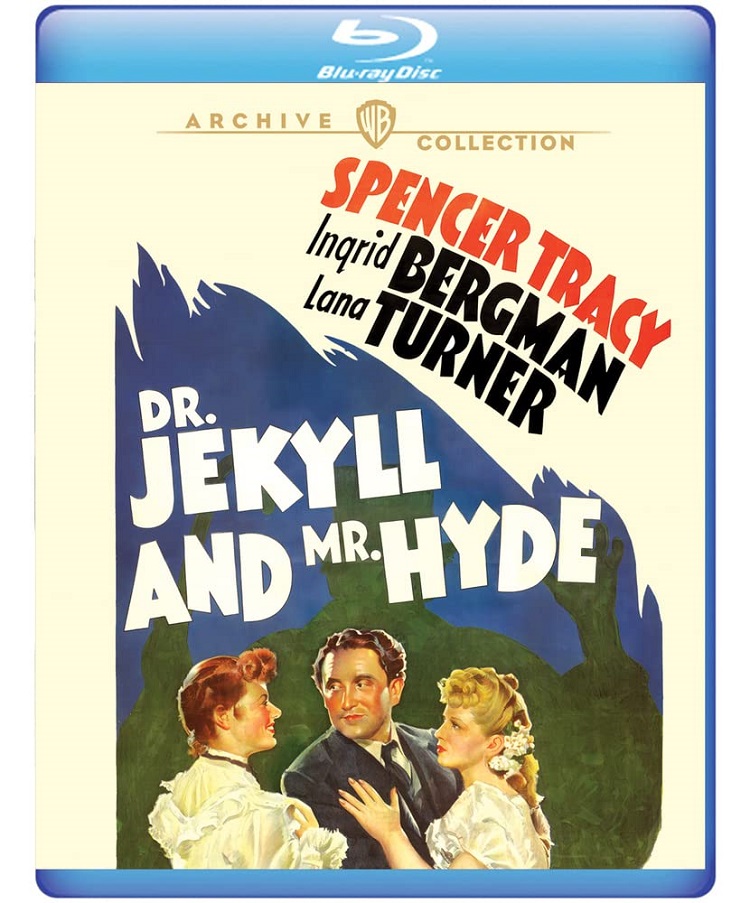
Robert Louis Stevenson’s 1886 novel Strange Case Dr. Jekyll and Mr. Hyde was originally sold as a penny dreadful and almost immediately became an enormous success. In less than a year, it sold over 40,000 copies. It has been adapted into countless movies, radio shows, stage plays, comic books, and video games. It has become a deeply ingrained part of our culture. Even those, like me, who haven’t read the story know what it is about.
This 1941 film adaptation was not the first version of the story to be put on film, nor the second, or third. It was (at least according to Wikipedia’s count) the 14th. There have been numerous adaptations since then. It is easy to understand why this story keeps being retold in various formats for it taps into something very universal – the duality of mankind. We all have various sides to our personalities. We all show parts of ourselves to strangers, to coworkers and acquaintances, and another part – maybe something deeper more “real” to close friends and loved ones. Those sides may not be “evil” and “good” like they are in the story, but they are very real. Dr. Jekyll and Mr. Hyde was perhaps the first story to really tap into that idea.
Technically a remake of the 1931 adaptation starring Frederic March (Warner Brothers put both out), the 1941 version stars Spencer Tracy as Dr. Jekyll. This story follows closely to the earlier film (pretty much every adaptation of the book takes quite a few liberties with it, the cinematic versions are especially fond of adding a love interest where there are none in the Stevenson tale). What is interesting about this version is that where previous adaptations tended to turn the Hyde character into a hideous monster, here the focus is more psychological, more Freudian. Tracey’s physical transformation is subtler than other adaptations. They give him a bit of a wig, add in some eyebrows and color his skin slightly darker. Tracey pushes out his jawline and gives him a wicked grin. But gone are the major prosthetics of other versions turning the character into a real monster. His Hyde side may be evil, but it comes from within not some physical manifestation.
Like most versions, here Dr. Jekyll is a genius scientist who has some interesting ideas about the duality of man. He believes he can separate the evil man from the good man allowing just the good man to live. His colleagues find these ideas to be a little too far out for them to accept it. As does Charles Emery (Donald Crisp), father to Jekyll’s fiancee Beatrix (Lana Turner). He’s not too fond of how much affection he lavishes upon Beatrix in public places either.
When Jekyll is not allowed to experiment on a dying man, he decides to do so on himself and Mr. Hyde is released. It should be noted that even though this film does not transform Dr. Jekyll into Mr. Hyde with an extensive amount of makeup and prosthetics, it certainly does relish showing what transformation there is via a stop-motion effect on multiple occasions.
Jekyll meets a barmaid, Ivy Peterson (Ingrid Bergman sporting the worse Cockney accent I’ve ever heard), one night by chance. They find themselves back at her place and nearly have a tryst (they are saved by Jekyll’s friend). This is used as a means for Jekyll to demonstrate the dual sides within himself to his friend (also for the film to demonstrate the absolute thirstiness of Ingrid Bergman). Later, Mr. Hyde finds Ivy, latches onto her, and begins abusing her just as fast (physically and mentally and though this is a 1940s film and thus it cannot be explicit about it, sexually as well).
At first, Dr. Jekyll must take a potion in order to turn into Mr. Hyde but soon enough the change happens more and more often without any drug inducement or even the desire of poor Dr. Jekyll. This leads to the inevitable showdown where one part of his personhood must win out.
Spencer Tracy is quite good in this dual role, especially as Mr. Hyde. Physically, he fully embodies the grotesqueness of Hyde with facial ticks and body movements. He falls deeply into the sinisterness of the character. Bergman, despite the awful accent, is quite wonderful as the barmaid. It is really quite something to see her as a bit of a tramp. It is Lana Turner who gets shafted a bit as her role as the fiancee gives her very little to bite into.
The movie looks great and moody, and director Victor Fleming demonstrates how he was one of the great early directors in Hollywood. As per usual with Warner Archive titles, there are not extras to speak of (just a lone trailer for the film) and they provide very limited information on the transfer.
Out of the dozens of movie adaptations of the Dr. Jekyll and Mr. Hyde story, this is generally considered one of the best (though not the best as that title typically goes to the 1931 version or the silent film from 1920 starring John Barrymore). It is well worth watching just to see Spencer Tracy play against type and Ingrid Bergman getting a little saucy.